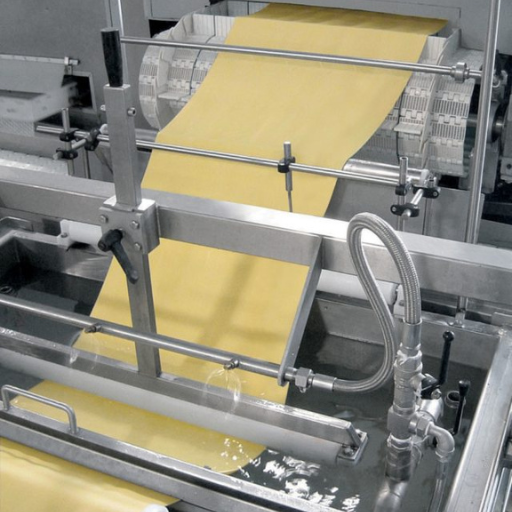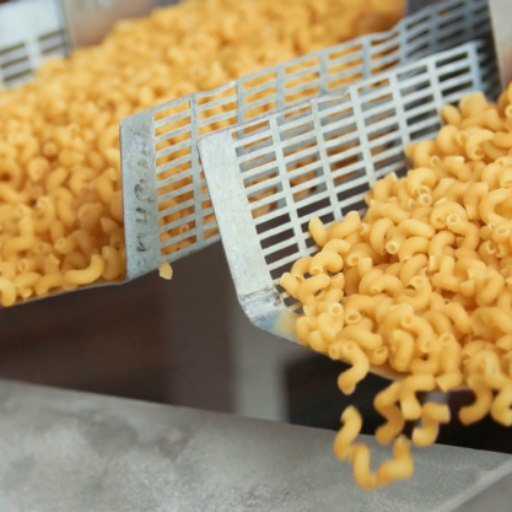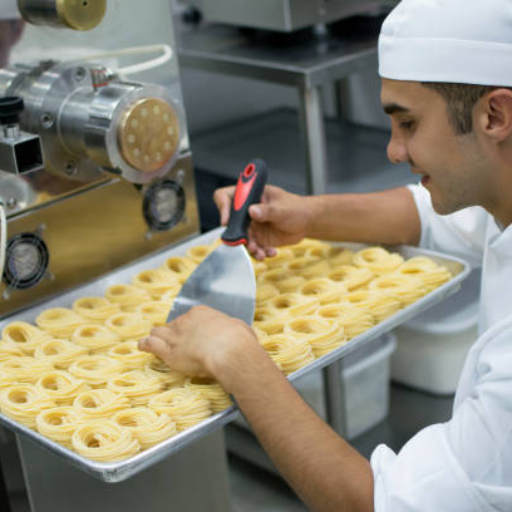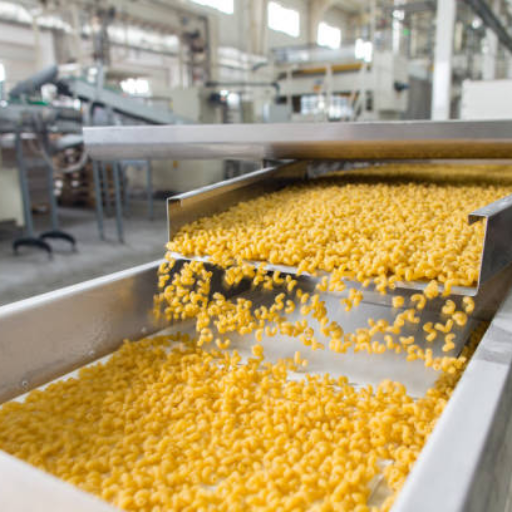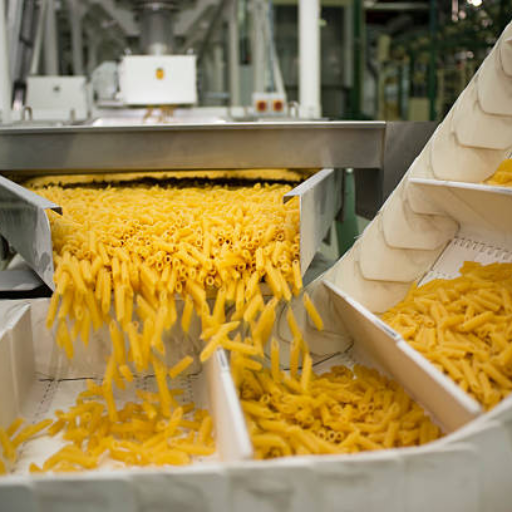In recent years, the culinary world has seen a surge in the popularity of fresh pasta, cherished for its superior texture and flavor compared to its dried counterpart. For producers looking to meet this growing demand, investing in state-of-the-art pasta production line equipment is crucial. This article explores the latest technologies and innovations in fresh pasta production equipment, designed to enhance efficiency and consistency while maintaining the traditional quality that consumers expect. From cutting-edge mixing and kneading machinery to advanced shaping and drying solutions, we will delve into how these modern tools can streamline production processes, reduce waste, and ensure top-notch product quality. Join us as we uncover the key components that every pasta manufacturer should consider for achieving optimal results in their production line.
What Are the Key Elements of a Fresh pasta Production Line?
The knowledge of pasta production line equipment
To be able to make fresh pasta efficiently, it is important for one to understand what the key components of pasta production line equipment are. These typically include:
- Mixing and Kneading Machines: This involves blending raw ingredients into uniform doughs so as to keep them constant in texture and taste.
- Extruders: Doughs are turned into different pasta types using these machines such as spaghetti, fettuccine or penne.
- Sheeters and Cutters: Before they are cut into their final shapes and sizes these machines first roll the dough into thin sheets.
- Drying Systems: Although dried pasta has less moisture than fresh pasta, there is still need for controlled drying for the right texture and extended shelf life.
- Pasteurizers: Used to heat treat the pasta in order to reduce microbial load and ensure food safety.
- Packaging Machines: Efficient packaging solutions play a vital role in maintaining freshness as well as quality during storage and distribution process thus contributing positively towards total quality management (TQM).
Understanding how these major elements can be integrated within a production line is likely to raise productivity levels while ensuring consistency as well as quality in fresh pasta manufacturing.
Types of Fresh Pasta Machines Used
For this reason, when starting a new line of business that deals with making fresh pastas, there are several classes of machinery that should be employed so that efficiency may be attained together with high-quality manufacture:
- Dough Mixers: These mixers are designed to combine ingredients perfectly until dough reaches its desired state; advanced ones can handle diverse kinds of flour along with other ingredients thereby offering flexibility on whether one would like their paste made from them or not.
- Extruders: Extrusion machines shape dough into various forms of pastas. There are interchangeable dies that enable making different styles including spaghetti, penne, fusilli etc..
- Ravioli Machines: Manufacturers who want to diversify their products by adding stuffed pasta to their range must employ ravioli machines because they can work with fragile dough sheets and at the same time provide precise placement and sealing of stuffing.
- Gnocchi Machines: These machines enable uniformity in size and shape for soft gnocchi pasta maintaining its traditional texture.
- Sheeting Machines: The dough is rolled uniformly by these machines into sheets which can be cut or filled according to particular types of pastas. They are critical for manufacturing lasagna as well as other flat variants.
- Cutting Machines: They can do this because of their different cutting mechanisms that allow them to slice sheets of dough into given shapes and sizes, thus making it possible to produce tagliatelle, pappardelle among others.
Using these special purpose instruments within a line devoted to producing fresh pastas will greatly improve productivity, product variety and overall quality hence enabling manufacturers to effectively meet market demands.
Role of machinery in pasta Manufacturing
Machinery plays a crucial role in the production process since it enhances efficiency and consistency when making pasta. Cutting-edge dough mixers and extruders provide accurate shaping and forming for pasta so that they have equal sizes as well as textures. Accurate placement of fillings using minimal waste is facilitated by equipment such as ravioli showcases advanced accuracy coupled with reduced wastage experienced during production runs. Different shapes can be made through sheeting followed by cutting which allows for creation of flat pastas like lasagna that take on unique forms. Therefore, modern pasta manufacturing equipment enables higher levels of productivity while satisfying a wide range of customer needs. Subsequently, machinery also ensures industrial scaleability besides preserving all natural qualities inherent in traditional Italian varieties thus being indispensable in commercial scale production activities involving such food products.
How Does the Production of Fresh Pasta Take Place?
Step-by-step guide to producing fresh pasta
Mixing and Kneading:
- Ingredients: Combine high-quality wheat flour (such as durum wheat semolina) and water. Some recipes also include eggs for added richness and elasticity.
- Mixing: Use advanced dough mixers to blend ingredients until they form a uniform dough.
- Kneading: Knead the dough until it attains desired elasticity, which is important for the texture of the pasta.
Resting:
- Rest period: This has an effect on the gluten in the flour rendering it more relaxed hence easier to handle when making the dough. Resting is therefore necessary for at least 30 minutes.
Sheeting:
- Rolling: Roll out thin sheets using sheeting machines. The thickness can be adjusted based on the type of pasta being produced.
- Quality Control: Ensure even thickness across the entire sheet to maintain the consistency of the final product.
Cutting and Shaping:
- Cutting: There are specialized machines that are used in cutting into various shapes depending on what one wants. For example cutters can shape into fettuccine, tagliatelle, or lasagna sheets among others.
- Shaping: For filled pastas like ravioli or tortellini, molds or ravioli makers are utilized in shaping and filling them.
Drying:
- Initial Drying: Place pasta on racks or use driers to reduce its moisture content. Fresh pasta has higher moisture content than dried pasta thus this process requires less energy input.
- Final Drying: In some cases this process is necessary especially if you are dealing with most types of fresh pastas that require just minimal dusting with flour so as not to stick together before drying finally takes place.
Packaging:
- Weighing and Packing: Portion fresh pasta properly into airtight containers. Packaging machinery helps ensure hygiene as well as prolong shelf life.
- Labeling: It is important, therefore, to put production date, expiry date and cooking instructions on the package.
These guidelines will aid manufacturers produce high quality fresh pasta that meet market standards and are tasty to the buyers.
The Significance of Quality Ingredients in Pasta Production
Quality ingredients hold substantial importance in pasta production as they influence its taste, texture, and overall culinary experience. Good quality flour such as durum wheat semolina with a high gluten content creates a coarsely textured grainy product, which is what sets it apart from other pastas. Fresh eggs give the dough rich taste and smoothness that will help it retain its shape throughout boiling. Also, pure filtered water maintains optimum dough consistency while avoiding any off-tastes. By utilizing top-notch components in their products, producers can ensure that they have both good flavor and quality for customer satisfaction.
Maintaining Hygiene During Fresh Pasta Production
To maintain safety in food and also guarantee the quality of a product made during this process one has to observe very strict hygiene measures. Key practices include:
- Sanitation of Equipment: Regular cleaning using food safe detergents to get rid of contaminants from equipment that comes into contact with pasta.
- Staff Hygiene: They should always follow personal hygiene by washing hands regularly, wearing clean uniforms and putting on protective gears like gloves or hairnets.
- Environmental Controls: It is important to keep the production area clean by ensuring temperature control and moisture levels are monitored; protect against pests invasion; maintaining strict cleanliness at all times within the facility.
- Ingredient Handling: preserve fresh ingredients in hygienic and correct states to avoid rotting and tainting. To keep it fresh and reduce waste, use the principle of first in first out.
To make sure that a superior pasta is achieved for customers and it is safe, stringent hygienic standards must be incorporated into the manufacturing process of fresh pasta.
What Types of Fresh Pasta Are Produced?
Exploring Diverse Forms of Fresh Pasta
The different types of fresh pasta are made in several shapes and sizes. Some common types include:
- Fettuccine: These flat, wide noodles are great for creamy sauces like Alfredo.
- Tagliatelle: This ribbon-like pasta is similar to fettuccine but narrower and it is typically served with rich meaty sauces like Bolognese.
- Ravioli: Square shaped pasta with various fillings such as cheese, meat or vegetables that are often eaten together with light tomato-based or butter sauces.
Classic fresh pasta has diverse options for any culinary creation enhancing both flavor and presentation in Italian cuisine.
Specialty Filled Pasta Varieties like Ravioli and Cappelletti
There are specialty filled pastas such as ravioli and cappelletti that possess unique flavors and textures that enhance the quality of food. Usually, ravioli come in square or circular shape of pasta pockets stuffed with cheese, meat or vegetables. Cheese ravioli is among the most popular ones which can be filled with a mixture containing ricotta cheese and Parmesan cream being able to accompany a number of sauces ranging from plain tomato to heavy Alfredo.
Cappelletti which translates to ‘little hats’ refers to small hat-shaped pastas originally stuffed with blended mixtures of meats and cheeses. They are commonly served in clear broth or accompanied by simple butter sage sauce so as not to mask their delicate filling. In making filled pastas like cappelletti and ravioli, the art lies not only in shaping perfect dough but also coming up with well-rounded savory stuffings compatible with variety of accompaniments such as broths, creams, stocks etc.
These specialty filled pasta varieties represent the richness of Italian cooking along with its cultural diversity offering home cooks and professional chefs alike both flexibility and classiness.
Cutting & Shaping Options in Short-cut Pasta
Short-cut pasta comes in a variety of cuts and shapes, each designed to complement different types of sauces and ingredients. Common examples include:
- Penne: This is tubular pasta with angled ends which is great for chunky sauces like marinara or arrabbiata.
- Fusilli: A type of spiral-shaped pasta ideal for chunkier sauces as well as small ingredients such as vegetables or meat pieces.
- Farfalle: Bow-tie shaped pasta is suitable for making cream-based sauces or salads due to its compact form and ability to take the sauce.
- Macaroni: Small, elbow-shaped pasta often used in baked dishes like macaroni cheese or in pasta salads.
- Rotini: Another type of spiral-shaped pasta similar to fusilli that harmonizes well with pesto, cheese, and tomato-based sauces.
These versatile shapes ensure that short-cut pasta can adapt to various culinary styles, from robust and hearty dishes to light and refreshing meals. The possibilities are endless when it comes to using short cut pastas be it in baking, boiling , or adding them into soups etc. for home cooks and chefs alike.
How to Choose the Right Pasta Machine for Your Production Line?
Factors to Consider When Selecting Fresh Pasta Lines
When choosing fresh pasta lines, there are a number of crucial things that must be put into consideration to make sure that the production is efficient and the output is of good quality:
- Production Capacity: Evaluate your daily or weekly pasta production requirements. A pasta machine should be chosen based on production volume without compromising on quality. Machines come with differing capacities; thus, it is important to select one which suits your business needs.
- Type of Pasta: Think about the kinds of pasta you would like to produce. Some machines are tailor-made for specific shapes and forms such as long-cut varieties such as spaghetti and fettuccine or short-cut ones like penne and fusilli. Confirm that the machine will cater for all your menu needs.
- Ease of Use and Maintenance: What kind of machines do you want? Find machines that can easily be operated by any person. When parts can also be removed with ease, down times become very minimal.
- Build Quality and Durability: Purchase a machine made from durable high-quality materials. Stainless steel components often last longer and they are easy to clean. Through durability, it means a continuous use machine.
- Cost and Return on Investment: After purchasing the machine then think about its cost against ROI. Although expensive up front costs may be associated with higher-end machines; many other aspects are better efficiency, lower maintenance budgets in future as well as high customer gratification due to better pasta quality that may lure them back again.
- Technical Support and Service: Does the manufacturer have technical assistance available? Its customer service team should respond promptly so as to provide solutions whenever there is a problem in operation.
By carefully considering these factors, businesses are able to choose fresh pasta lines that best suit their production goals, quality parameters, and financial constraints.
Comparing Pasta Machines for Industrial Pasta Production
There are several considerations when comparing industrial pasta making machines towards ensuring that you pick out the best option for your company:
- Production Capacity: Identify machines that can meet your specific output needs. Efficiency should be retained for bigger production lines of large scale by using high-capacity machines to always fulfill demand.
- Versatility: Choose a machine that can deal with many types of pasta dishes; this will have the effect of increasing your product range. They should also be able to change from long-cut to short-cut types without much time wasted.
- Ease of Use: You need machines that are easy to operate and understand their instructions. This avoids in-depth training so as to focus on quality during production.
- Maintenance Requirements: Find out what kind of machines these are? These include parts that can be dismantled easily, and stainless steel materials, among others which may reduce lead time and increase longevity over a longer period.
- Cost and Efficiency: Consider both the upfront costs as well as long-term operating expenses. In addition, high-efficiency machines may cost more initially but help save energy leading to reduced waste thus better ROI.
- Technical Support and Service: Assess the degree of technical support offered by the manufacturer. Because it improves downtime in case of breakages or malfunctions in equipment, good customer service is very important
Based on these key points, organizations can now make their informed choices about which pasta maker they should invest in order to ensure superior quality products while meeting their target production levels and promoting sustainable growth.
Integration and Maintenance of Fresh Pasta Production Line
Integration Steps:
- Layout Planning: Plan the production line layout by accommodating mixers, extruders, dryers, and packaging equipment to ensure efficient space utilization.
- Workflow Optimization: Design a seamless workflow that minimizes product handling and transition times between different stages of production.
- Automation: Introduce automated systems whenever possible to guarantee uniformity as well as reduce manual labor. Such as automatic dough handling and cutting systems.
- Training: Teach all operators how to run the system and troubleshoot it quickly just in case there is a hitch.
Maintenance Guidelines:
- Regular Inspections: Carry out regular checks on all machines for wear or possible faults before they happen.
- Cleaning Protocols: Follow strict cleaning procedures for parts that are in direct contact with foodstuffs so that they do not get contaminated with dirt or any other foreign matter.
- Preventive Maintenance: Observe the recommended maintenance schedule from the manufacturer including lubrication and replacements of parts among others such as lubrication and changing parts when applicable as per the company’s advice.
- Record Keeping: Maintain records that show what work has been done on each machine over time including inspections done to know their condition as well whether they still have some life left or need servicing soon through this information kept down here; detailed service records can be analyzed in order predict future needs for repairs/preventative measures which might be required later such as when another breakage occurs somewhere else causing delays again due lack materials needed repairing appropraiate manner thereby reducing downtime significantly while ensuring good quality products being produced continuously during these periods.
- Spare Parts Inventory: Keep stock levels of critical spares at an acceptable minimum thus reducing any possible machine breakdowns unexpectedly occurring leading only minimal drop off productivity levels resulting into less down times but rather constant high quality output rates throughout one’s stay within these given markets until their products gets consumed completely before being replaced either way depending upon specific demand requirements which may change over time.
How Can Pasta Factories Ensure High Efficiency in Pasta Production?
Optimizing Production Lines for Fresh Pasta
In my quest to meet the highest possible productivity levels in making fresh pasta, I have concentrated on several areas. The first thing is to simplify the production process through a layout that facilitates seamless movement from one phase to another, thus reducing handling and transitioning time. Consequently, automation ensures consistent quality and less human intervention that enables an even pace throughout. Equally important, regular training of operators allows everyone to be a master in operation of the machines as well as trouble shooting. In addition, it helps identify potential challenges which can be addressed early enough hence avoiding unplanned downtime besides prolonging machine useful life. For this reason, workflow optimization, efficient use of automation systems with regard to keeping strict training and maintenance schedules will help me reduce waste and improve the quality of my pasta products.
Implementing Systems for Fresh Pasta Processing
There are different things that must be done when implementing such systems. First thing is acquiring modern equipment that automates key production processes like mixing, kneading and shaping; this enhances homogeneity and saves time. Additionally, there are advanced inspection devices which ensure compliance with rigid acceptance criteria ranging from ingredients blending up to packaging stages. Also, real-time analysis of overall performance boosts efficiency by minimizing wastage through timely adjustments made on various parameters affecting production activities. Finally, fostering a culture of continuous improvement through regular training and feedback loops ensures the team stays adept at handling the latest technologies and methodologies. These strategies will help me in optimizing an entire product line involved in making fresh pasta as well as increasing its overall efficiency.
Managing Pasta Production Schedules and Outputs
Optimal management techniques for pasta production scheduling and output necessitate a strategic approach that combines thorough planning, real-time monitoring as well as flexibility when required by circumstances. One major consideration involves developing a comprehensive production plan containing estimates about demand, stock levels and ability to produce. At the same time, there is a need to use modern scheduling software which can adapt on demand fluctuations thus avoiding any operation bottlenecks. Moreover, this also means that management has to have control over all the production processes by having integrated systems which are capable of monitoring in real-time so that they can make instant changes without compromising on set rates. Therefore, I will be able to avoid anticipated disruptions through predictive analysis as well as establishing early-warning indicators. Another important strategy to be used is an open communication system that enhances teamwork among the employees making them more responsive and efficient in terms of identifying and adapting to any shifts or variations that might occur. These strategies will enable me manage pasta production schedules and outputs efficiently.
Frequently Asked Questions (FAQs)
Q: What types of fresh pasta can your innovative pasta machinery produce?
A: Our innovative pasta machinery is capable of producing various forms of fresh pasta, including gluten-free pasta, traditional shapes like cannelloni, and other specialty forms.
Q: How can your equipment make the production of pasta more efficient?
A: Our equipment utilizes highly advanced technologies and a highly efficient line design that makes it possible to increase production rates, minimize wastage and ensure optimal hygiene – thus making the entire process of producing pasta more efficient.
Q: Can your pasta processing line handle the production of gluten-free pasta?
A: Yes, our pasta processing line enables us to produce gluten free pastas without any cross contamination so that they meet the required standards.
Q: What specific characteristics exist in your pasta making machine that enhance shelf life?
A: Our Pasta Making Machine includes such features as gas or steam pasteurizers and best sterilization practices which greatly improve product’s shelf life.
Q: How do I get in touch with you for more details on how to acquire your Pasta Production Equipment?
A: You are free to contact us anytime if you need more information about our Pasta Production Equipment. We will be glad to offer you detailed information as well as support.
Q: What is the role played by steam pasteurizers during the manufacture of pastas?
A: By utilizing an effective and safe method of pasteurizing during manufacture process using specifically designed steam pasteurizers, harmful bacteria are eradicated while extending the shelf life of the product.












